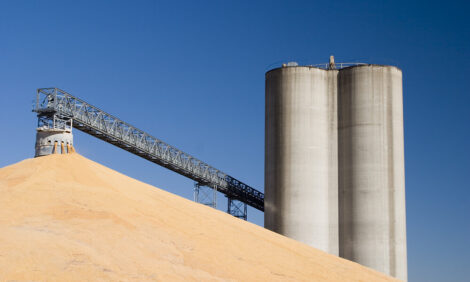



Inconclusive BSE Test Result Should Not Cause Consumer Concern
US - Today's announcement that a cow has tested "inconclusive" for BSE should not be interpreted as an indicator that the US meat supply was or is contaminated by "mad cow disease" but rather proof positive that steps taken to staunch the disease are working, says J. Patrick Boyle, President and CEO of the American Meat Institute.
|
The results, which are being reanalyzed in a government laboratory for final confirmation and will soon be confirmed, were released by the United States Department of Agriculture. However, John Clifford, deputy administrator of USDA’s Veterinary Services, said that it was “very likely“ that the final test would turn up negative for BSE.
“Regardless of whether the final test confirms negative or positive, however, the food supply remains safe because BSE has never been found in the meat we eat,“ Boyle said. Boyle noted that the surveillance program is a tool used by the government to gauge the effectiveness that strategies that have been in use for over a decade to fight BSE. “It’s important to not confuse the test results with the issue of food safety, since BSE has never been found in the meat we eat, and since all parts from all cattle that could contain BSE are uniformly removed and eliminated from the human food supply at processing,“ he added.
BSE has only been found in certain parts of the brain and spinal cords, known as specified risk materials (SRMs) which by law are removed during processing. Boyle noted during the outbreak of BSE in Europe, “people became ill because they consumed tissues from infected animals, not realizing that this posed a risk. In fact, brains were commonly consumed in the United Kingdom during its BSE epidemic. By contrast, in the U.S. all tissues that could pose a risk to humans if an animal has BSE are not permitted in the human food supply.“
When BSE was first discovered in Europe in 1986, the U.S. sent a team to the United Kingdom to learn from their experience and began putting in place multiple firewalls to protect animal health and public health. These firewalls include:
The U. S. Government implemented careful import controls on cattle and beef from countries with BSE.
The Food and Drug Administration restricted the feeding of ruminant protein back to ruminants to prevent any BSE from spreading among cattle.
The Department of Agriculture has dramatically increased its animal testing program to detect and contain BSE if it is present in our cattle herd.
Federal meat inspectors require beef processors to remove the tissues from animals that can pose a risk to humans.
As a result of our multiple firewalls, experts at the Centers for Disease Control and Prevention and the U.S. Department of Agriculture say the risk of BSE to humans is near zero. Boyle noted during the outbreak of BSE in Europe, “people became ill because they consumed tissues from infected animals, not realizing that this posed a risk. In fact, brains were commonly consumed in the United Kingdom during its BSE epidemic. By contrast, in the U.S. all tissues that could pose a risk to humans if an animal has BSE are not permitted in the human food supply.“
For more information on BSE testing, what it can and cannot accomplish, visit www.meatami.com and click on the press center. For more information on the USDA’s announcement, go to www.usda.gov
Source: American Meat Institute (AMI) - 28th June 2004













